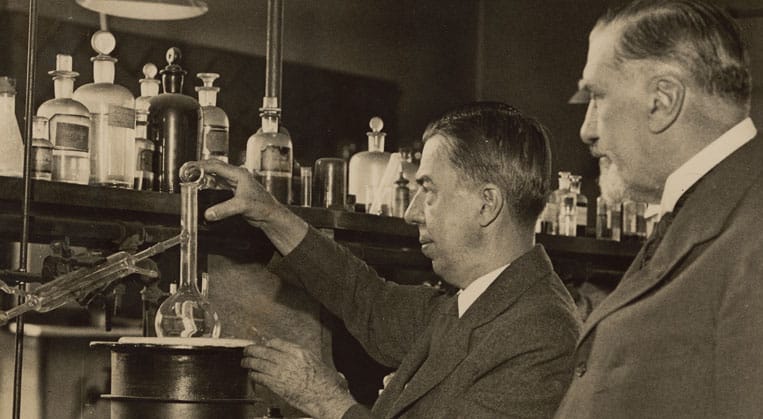I listened to The Poisoner’s Handbook: Murder and the birth of Forensic Medicine in Jazz Age New York by Deborah Blum (narrated by Coleen Marlo) on a trip to Melbourne and am currently finishing it as I write this. I have always been fascinated with true-crime so thanks to Olive, over at abookolive, I found about this book, and it went straight to the top of my to-read pile.
The book centres around Alexander Getter a toxicologist, and Charles Norris a medical examiner, who together
pioneered forensic science during the jazz age in New York, by solving crimes through testing for chemical trace elements. The poisons talked about are; Chloroform, Wood Alcohol, Cyanides, Arsenic, Mercury, Carbon Monoxide, Methyl Alcohol, Radium, Ethyl Alcohol and Thallium.
Each chapter in the book introduces you to a poison and a crime, it explains how the poison was ingested and what happens in the body in the ‘poisoning’ process. Blum recounts how Getter and Norris tested the samples of tissue to prove how the poison developed once it had entered the system.
Alexander Gettler was born 13 October 1883, in Galicia, Poland. He emigrated with his father and sister to America when he was seven and settled in Brooklyn. He held a PhD in Biochemistry from Columbia University. Prior to his work as the first forensic chemist, Gettler worked as a clinical chemist at Bellevue Hospital in Manhattan and taught biochemistry at New York University School of Medicine.
Charles Norris was born 4 December 1867, in Hoboken, New Jersey. Norris was one of the people who was publically against city coroner. These were people who were consulted to determine how a person died in a suspicious death. These coroners had no medical training and anyone could call themselves one and the whole industry was corrupt. Science played no role in crimes and Norris wanted to change that.
In 1917, Norris, applying for the job of Chief Medical Examiner of the City of New York, took a civil service examination and passed. Mayor John F. Hylan immediately took legal action against him, claiming that in performing autopsies as part of the examination he had violated the law. Fortunately for Norris, the state government took notice and intervened, forcing Hylan to appoint Norris chief medical examiner.
The Poisoner’s Handbook by Deborah Blum
The book has equal amounts facts and storytelling, tied all together with quotes from newspapers on what the opinions were at the time that these events were going on. That is what is slightly mind-boggling is that the events that take place in this book actually took place.
These murders happen when prohibition was a hot topic. An interesting side-story parallel the birth of forensic science is the various and sometimes deadly substitutes that people were using to get their alcoholic fix. For those of you who are unaware, prohibition was a national ban on the sale, production, importation, and transportation of alcohol in America. It lasted for 13 years between 1920 through to 1923. Promoted as the ‘dry’ crusade. It began on January 16 1920, with 1,520 Federal Prohibition police were instructed to enforce the law.
Overall, this book is an enlightening, entertaining, addictive read/listen which introduces you to the world of forensic science, a series of murders that although tragic, if they hadn’t happened that toxicology would not be what it is today.
AUTHOR’S NOTE: PBS brought the rights and created a documentary called The Poisoner’s Handbook, which includes interviews with the author. You can find it on YouTube here.

Leave a Reply